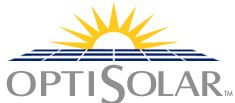 Firms need attention to thrive, right? Well, no, not always — some companies prefer to remain in stealth until they’ve reached some milestone, or maybe just indefinitely.
Firms need attention to thrive, right? Well, no, not always — some companies prefer to remain in stealth until they’ve reached some milestone, or maybe just indefinitely.
Put Optisolar, a manufacturer of thin-film solar panels, in that latter category. When we first reported on Optisolar a year ago, it was planning to build one of the world’s biggest solar farms in sunny Ontario, Canada and it was doing it quietly. Now it appears that business is booming and the company is expanding at least as quickly as others we regularly report on, like Nanosolar.
That’s evidenced by the one announcement Optisolar made recently, of plans to build a solar plant capable of producing 550 megawatts on land in San Luis Obispo County, Calif. For reference, that’s a monstrous size, unheard-of for any project using solar panels (rather than alternate technologies like solar thermal). The company says the project will power about 190,000 homes.
The original plan in Sarnia, Ontario was for a 40MW plant, which has since been expanded to 50MW, with construction just started, according to Celsias. Two additional 20MW projects will be placed nearby in Petrolia and Tilbury. Another project was rumored to be under consideration in nearby Detroit.
It sounds odd for Optisolar, which is based in Hayward, Calif., to have chosen to build first in Ontario, but that’s likely because of the artificially high prices it can receive there — 42 cents per kilowatt hour, according to the Toronto Star. However, the market is more competitive in California, and the company will need to offer a low enough price to convince the local utilities to buy its power, over that of other renewable sources.
A separate question is where all these panels will come from. For that, the company will stay close to home. It just leased 650,000 square feet in a former Air Force base, according to the Sacramento Business Journal. That’s about as much space as Nanosolar planned for both of its two facilities, in San Jose, Calif. and Germany. However, Optisolar plans to go even larger, expanding to occupy over a million square feet and employ 500 people by 2011. There’s an extra incentive for Optisolar to grow quickly — if it fails to meet expectations, it may have to forfeit part of the $20 million in tax breaks offered by the local government.
Right now, the company’s website claims a staff of 270, making it a rather large startup. But it’s also recruiting at a good clip. On Jobster, for instance, there are 23 positions listed, all white-collar (in other words, they aren’t listing their manufacturing positions online). Most are for engineers, but tellingly, three are for various human resources positions, indicating that the company is already expanding its support services for an ever-larger staff.
The next logical question is where the funding for all these projects and facilities is coming from. The source almost certainly isn’t Silicon Valley venture capitalists — another reason the company can keep a low profile. It did recently take in a $38.3 million funding from a Canadian private equity fund, according to Earth2Tech. But more is certainly required to grow a company to the size Optisolar seems to be aiming for. Luckily, several top execs at the company seem to have connections to other private equity firms, as well as oil companies, as we pointed out last year.
A picture is forming, but there are lots of questions remaining about Optisolar. For instance, how efficient are its solar cells? What’s their cost per watt? Repeated inquiries to the company over the past few weeks have been fobbed off or ignored, so I’ll leave it in your hands — if you’ve know more, drop me a line.

